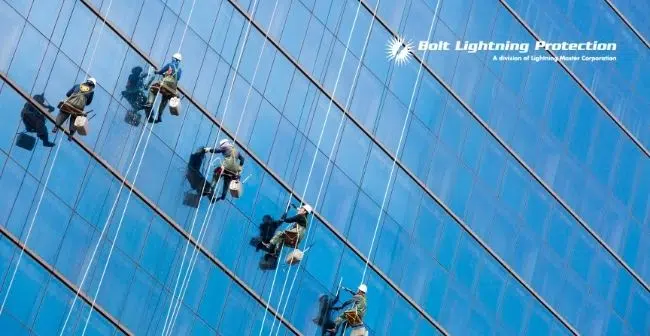Everything You Need to Know About Lightning Risk Assessments
The National Fire Protection Association (NFPA 780) lightning risk assessment serves as a guide and provides a methodology to assist facility owners and safety professionals looking to determine the risk of lightning damage or injury due to lightning.
As a building owner, understanding your facility’s vulnerabilities to lightning strikes is necessary to prevent property damage and loss of life, especially if the facility is located in a high lightning density area. To that end, we have prepared a brief overview of lightning protection risk assessments.
What Are Lightning Risk Assessments?
A lightning protection risk assessment evaluates whether a building and its surrounding environment are at risk of a lightning strike. This study also determines whether the structure requires a lightning protectionsystem to mitigate risk of damage and injury. It can be used to determine which structures on a site would likely benefit from the addition of lightning protection systems, and which structures have no need for additional protection measures.
Lightning protection systems are not required in the U.S., and it is up to the authority having jurisdiction or the building/facility owner. For Florida, the building code mandates lightning protection systems on all recently built nursing homes, schools, and hospitals. NFPA 780 also recommends that the installed lightning protection systems are inspected at least annually.
Reasons Why You Should Assess Your Building’s Lightning Protection Risk
Lightning strikes account for a high number of Florida’s insurance claims, where thunderstorms occur the most. Also, such occurrences could lead to the following:
- Fires
- Damage to electronics
- Downtime
- Loss of life
- Property damage
Your facility’s lightning risk assessment scores influences recommended lightning protection measures. Factors include:
- Areas with a lot of human traffic
- Institutions that offer essential services
- Regions that experience regular lightning flashes
- Isolated buildings
- Facilities that store flammable items
- Historical buildings
NFPA 780 risk assessment will take into consideration the following:
- Lightning strike density. This measure assesses the annual lightning strikes per km2. A higher density means higher exposure.
- The number of people who are vulnerable if a lightning strike occurs
- Lightning risk components i.e risk of injury, physical damage, failure of internal systems etc.
- The building’s risk levels regarding the adjacent buildings/surroundings, construction, and proximity.
- Loss Factors – loss of life, injury, service, & economic
Carrying Out the Lightning Risk Assessment
Apparent hazards have always been slips and falls for construction workers, collapsing objects, noise, and chemicals. However, most people forget about lightning strikes because such threats are rare, especially if you do not live in Florida or around the Gulf Coast.
Working with a Lightning Risk Assessment Expert
A lightning risk assessment is an intricate process that requires gathering all the necessary detailed information required from the building/facility owner to complete the assessment as accurately as possible. Lightning Master Corporation offers comprehensive Lightning Protection Services such as Risk Assessments to NFPA 780 to help provide answers and solutions related to lightning protection and the risks associated to a diverse client list.
As a UL Certified Lightning Protection System Installer, Lighting Master can provide our clients with reliable lightning protection solutions, including design, installation, & certification. Are you looking for lightning protection experts in Florida? Reach out to us at (727) 447-6800 to schedule a no-cost consultation.




